Doors Without Keys, by artist, Abbas Kiarostami features large-scale photographs of doors from countries like Iran, Morocco, Italy, and France. The doors are printed on canvas and displayed on free standing walls. This maze-like configuration encourages the visitors to chose their own pathway, creating endless variety of possible tours.
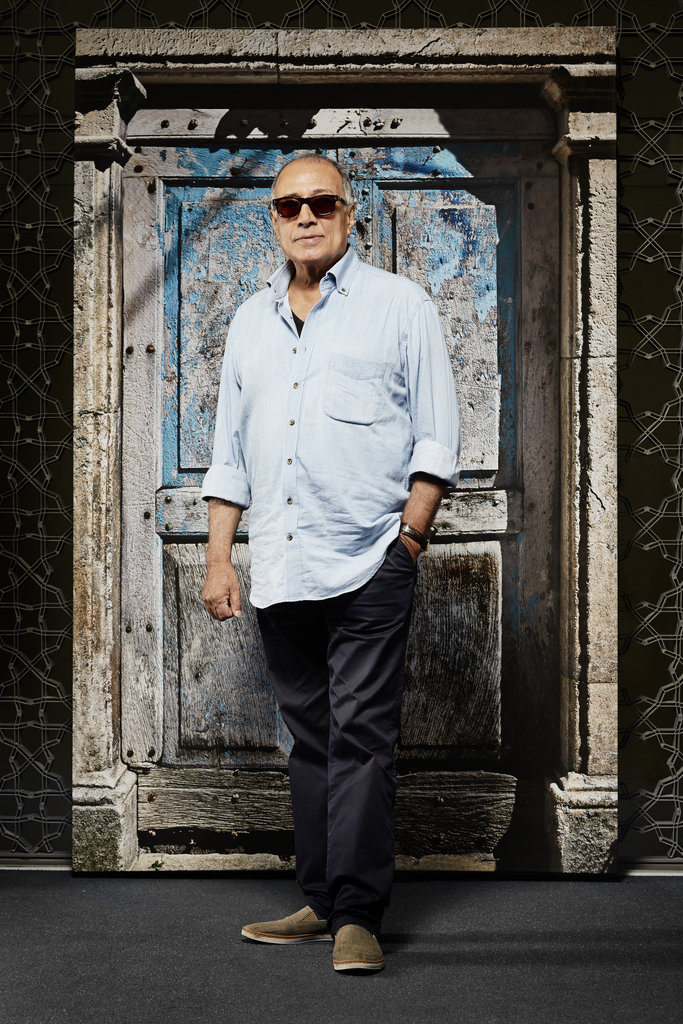 Abbas Kiarostami. Photo: Janet Kimber. Courtesy of The Aga Khan Museum
Abbas Kiarostami. Photo: Janet Kimber. Courtesy of The Aga Khan Museum
This is a truly sensory experience as the closed doors make one guess what could lie behind them and when they were last opened. Making the visual experience even more interesting the light flows into the room through a lattice pattern giving the illusion that we are outside. As you walk through the show, enamored with the colours and wonders of each door, sounds of doors creaking open and other outdoor noises play in the background.
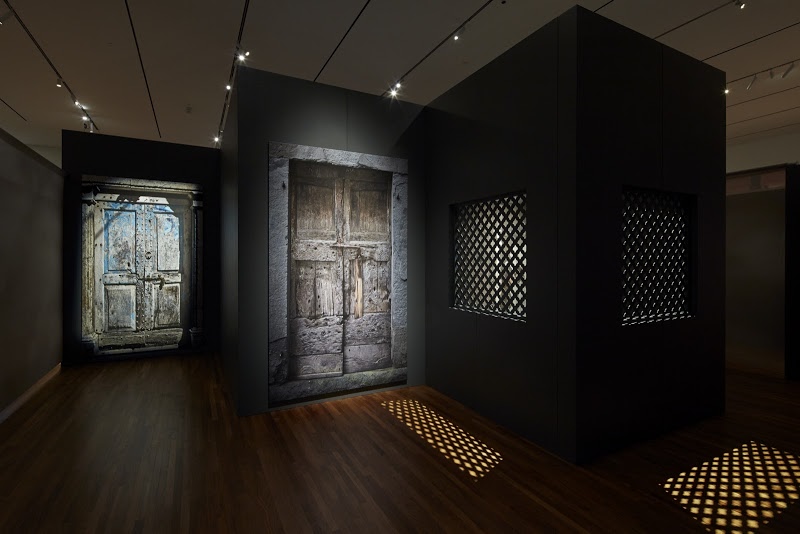 Installation view. Photo: Janet Kimber. Courtesy of The Aga Khan Museum
Installation view. Photo: Janet Kimber. Courtesy of The Aga Khan Museum
For over 20 years, Kiarostami took images of the doors presented here. Each represent different material and architectural structures but in the end – even they allow us to make territorial connections – they all feel similar.
Most of the doors are made of wood an their latches and locks are heavily rusted indicating the passing of time and their lack of usage. The sand collected at the bottom of a wooden door suggests that it is located in a hot climate, close to a desert. The faded paint also seems to indicate the damage from intense heat and wind. There are three key holes in the middle of the door, but the lock is located at the top. The key hole in the center of the photo is large enough to feel a connection with what lies behind – you can attempt to look through it, peaking in with a child-like curiosity.The triangular metal piece on another door looks as it could have been a keyhole or an opening to look through, what we call a peephole now. The door is deeply weathered, the once beautiful yellow and turquoise paint flaked off. There are water damage on the top left corner, so it is from somewhere with a better climate.
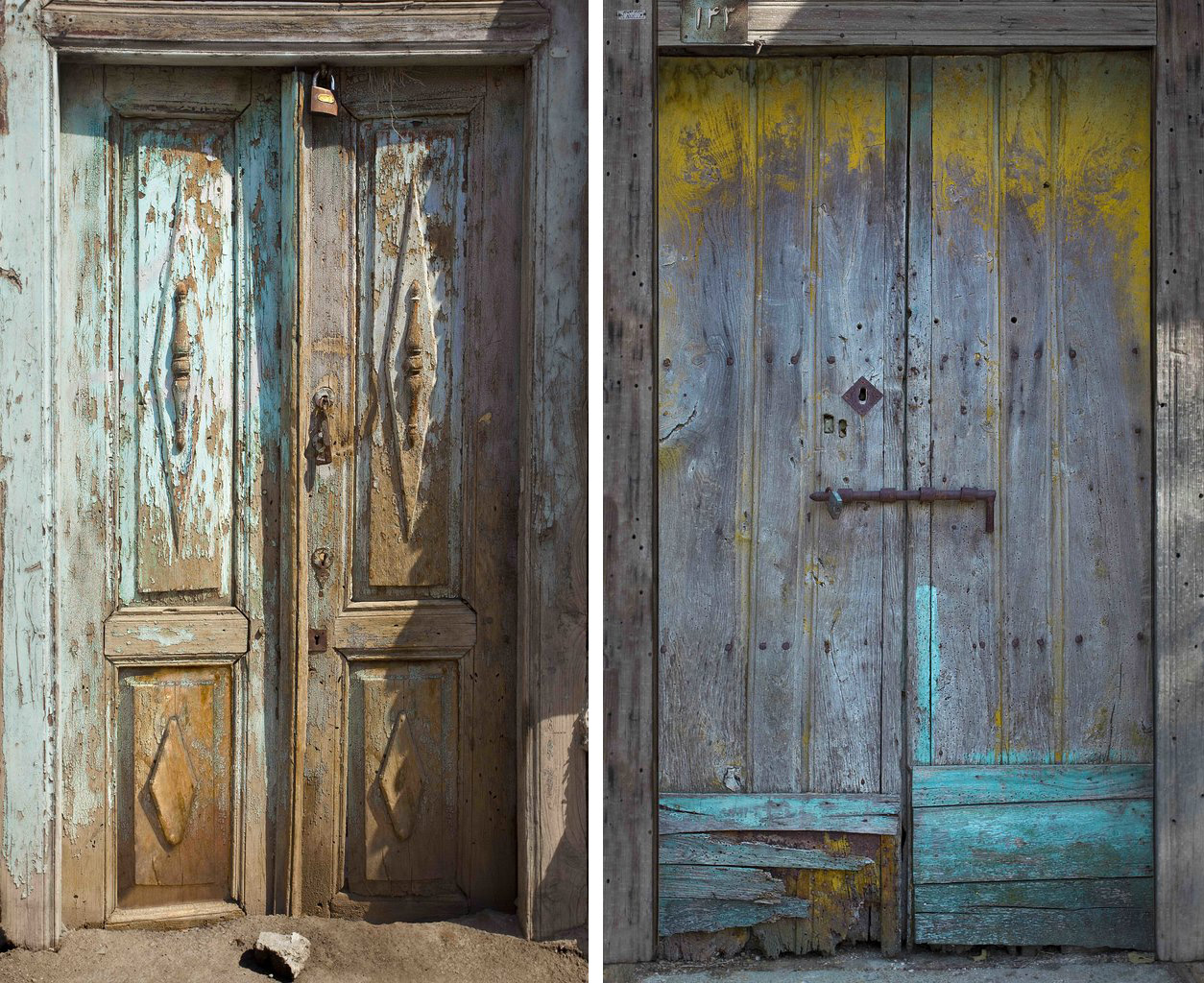 Abbas Kiarostami, Doors from the exhibition Doors Without Keys. Courtesy of The Aga Khan Museum
Abbas Kiarostami, Doors from the exhibition Doors Without Keys. Courtesy of The Aga Khan Museum
The door made from a thin sheet of metal, has a wonderful shadow beneath the lock, indicating that it is slightly ajar. It has rivets running up and down giving it a texture. I love the contrast between the vibrant green plants at the bottom of the door and the cold man-made metal of it. The locks make sure that the plants are the only ones able to get through to the other side. Most of the doors throughout the exhibit have similar square frames but this one stands out by having a rounded arch. The door seems to disappear behind the stone work, hinting that the arch was put around it later. I don’t think this door could be opened anymore, so the strong chains and double locks are totally unnecessary. Only the smaller door in the middle, that seems to resemble a trap door for animals, would be able to function. The intense concrete frame that surrounds another door juxtaposes its bright colouring. The spirited blue and yellow paint create a welcoming feeling of warmth. The greens at the bottom of the door might come from moss growing on it due to the aging procedure, placing it somewhere in the Mediterranean.
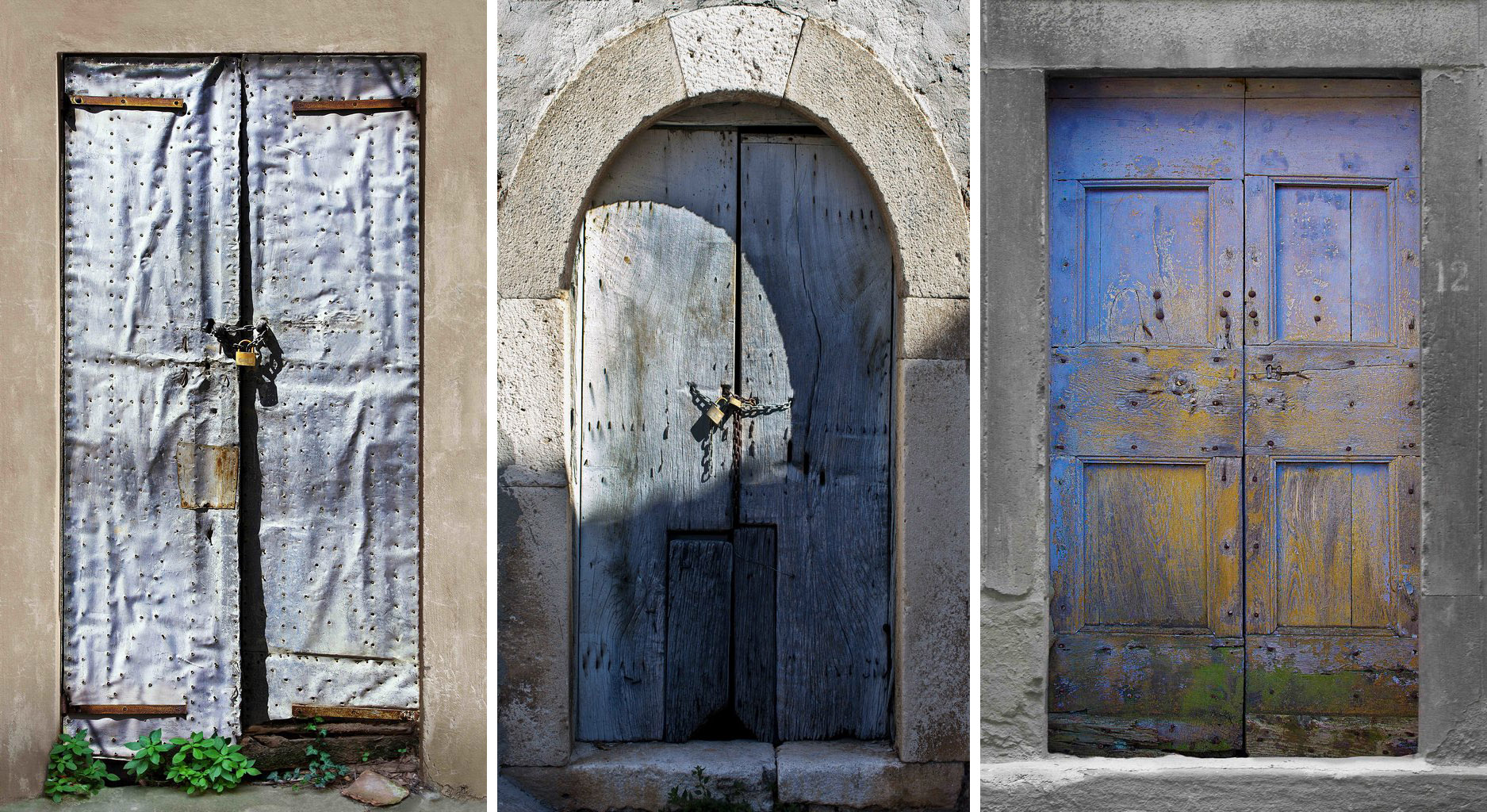 Abbas Kiarostami, Doors from the exhibition Doors Without Keys. Courtesy of The Aga Khan Museum
Abbas Kiarostami, Doors from the exhibition Doors Without Keys. Courtesy of The Aga Khan Museum
I find it strangely fascinating that the locks and padlocks are located on the outside of the doors. This is intriguing because it makes us think that these doors, even not in use, still have something valuable enough to keep hidden. All the images suggest more than a simple, unused entrance – they are heavily loaded with cultural elements and psychological remains of the inhabitants who used to leave behind them, who vacated these places willingly or by force. We can only guess the history they represent.
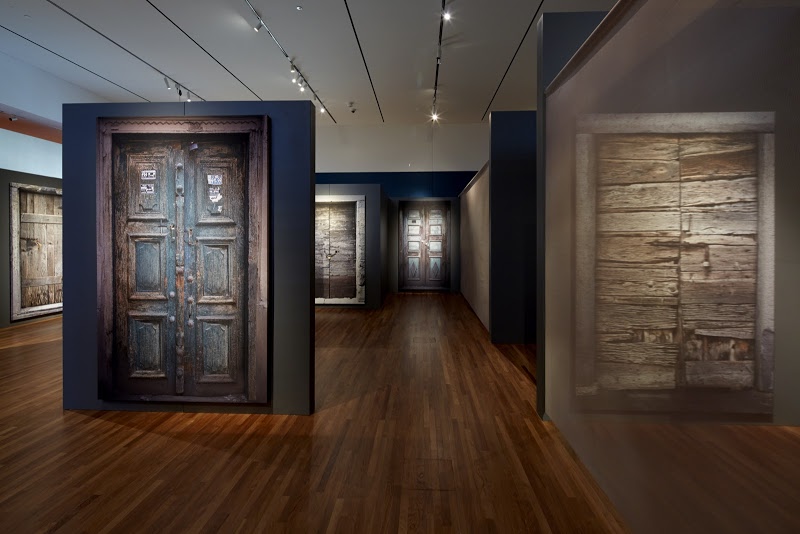 Installation view. Photo: Janet Kimber. Courtesy of The Aga Khan Museum
Installation view. Photo: Janet Kimber. Courtesy of The Aga Khan Museum
Between the doors, placed on certain walls, there are quotes from Kiarostami’s poems – beautifully accompanying the photographs:
“Dozens of keys
Lying there for ages
I dare not throw them away
With no lock around”
If, only if, we could have those keys and enter…
Emily Newell
*Exhibition information: November 12, 2015 – March 27, 2016, The Aga Khan Museum, 77 Wynford Drive at Don Mills and Eglinton, Toronto. Museum hours: Tue & Thu – Sun, 10 am – 6 pm; Wed 10 am – 8 pm.
